Table of contents
Raisins (organic?) are dried grapes. They have a sweet taste and are shriveled and wrinkled due to the loss of water. Raw food quality is not always guaranteed.
Use in the kitchen
Raisins is the general term for all dried grapes. Every grape variety is suitable for this, which is why they are available in different sizes, shapes and colors. Depending on the grape variety and origin, certain raisins have their own name. Sultanas are made from white Sultana grapes. They are particularly large, have thin skins, are seedless and are golden yellow. The dark brown, sometimes almost black currants are made from the Korinthiaki (black currant) variety. Zibebs are berries that have been dried on the vine. Green raisins are made by drying the grapes in the shade. They mostly come from Iran.
You can eat the dried fruit on its own. Combined with various types of nuts, you can find them in stores as so-called "trail food". They are part of many muesli mixes and you can also use them as a topping for pea muesli . They also taste delicious in a fruit salad with apple , pear and orange . It is important not to eat too many raisins at once, as they contain a lot of calories and sugar.
Raisins are often used as an ingredient in desserts (due to their high sugar content) or baked goods. Foods containing raisins include raisin rolls, cakes and Christmas stollen. Raisins are sometimes placed in fruit juice, alcoholic drinks (especially rum ) or water to make them plumper, softer and fruitier before they are used. Raisins give savory dishes a slight sweetness. They are particularly popular in Arabic cuisine, as an ingredient in spiced rice or couscous with raisins and almonds.
Making your own raisins
Raisins are easy to make yourself, but seedless varieties are best. Traditionally, they are dried in the sun. To do this, hang the bunches up or place the individual berries on an air-permeable surface such as gauze or cotton gauze.
For raw raisins, it is best to use a dehydrator and do not set the temperature above 40 °C. With a dehydrator, you can set the temperature precisely and the different models usually have their own instructions (length and temperature) for each type of fruit. Dehydrators are also very energy efficient, as fruit needs many hours to dry.
Alternatively, you can use the oven with the convection function. To do this, place the grapes on a baking tray lined with baking paper. It is more energy efficient to put several trays in the oven at once. When drying in the oven, it is necessary to leave a small gap open so that the moisture can escape. You will often find instructions with drying temperatures of 70 °C. If you want to dry as gently as possible, we recommend temperatures of 40-50 °C. If you cannot regulate the oven temperature precisely below 50 °C, it is advisable to set the oven to the lowest setting (usually starts before 50 °C, but without a display). Heat also escapes through the open gap and you can assume that the temperature will reduce somewhat as a result.
Vegan recipe for spiced couscous with raisins
Ingredients (for 4 people): 1 orange , 4 tbsp raisins, 300 g couscous , 1 pinch cardamom powder , 1 pinch ground cumin, 1 pinch cinnamon powder , 1 pinch cayenne pepper , 600 ml vegetable stock , 8 almonds , half a bunch of green mint or Moroccan mint .
Preparation: Halve the orange and squeeze out the juice, soak the raisins in the orange juice. Mix the couscous with the spices, put in a bowl and pour the boiling stock over it. Stir well and cover and leave to swell for about 10 minutes. Loosen the couscous with a fork. Finely chop the almonds or alternatively use almond slivers or almond flakes. Wash the mint, shake dry and chop and mix into the couscous together with the soaked raisins and chopped almonds.
Vegan recipes with raisins can be found under the note: " Recipes that have the most of this ingredient ".
| Not only vegans or vegetarians should read this: Vegans often eat unhealthily. Avoidable nutritional mistakes . |
Purchasing - Storage
Raisins can usually be bought at major retailers such as Coop , Migros , Denner , Volg , Spar , Aldi , Lidl , Rewe , Edeka , Hofer and Billa . Raisins can also be found in health food stores and organic supermarkets such as Denn's Biomarkt and Alnatura , sometimes even in raw quality. Raisins are available all year round .
Raisins, like most dried fruit, are often sulphured (E 220). For health reasons, unsulfured raisins without sugar (unsweetened) should be preferred. Organic dried fruit also contains fewer pesticides. Temperatures of over 70 °C are often used for industrial drying (see Industrial production). Raisins in raw food quality must therefore be specially labelled. The raisins are sometimes sprayed with cooking oil to prevent them from sticking together.
The availability of raisins varies depending on the size of the store, catchment area, etc. If you are interested, click on our recorded food prices for the DA-CH countries (above under the ingredient image). There you will find current prices from various supermarkets and their price development.
Storage tips
Raisins, like other dried fruit, should be stored in a container (screw-top jar) that is airtight, dry, cool and protected from sunlight. Raisins can be kept for up to a year this way. 2 Over time, a white coating can form on the raisins. In most cases, this is crystallized sugar and not mold.
Ingredients - Nutritional values - Calories
100 g of raisins (organic?) have an energy content of 299 kcal. The largest part is made up of carbohydrates (79 g/100g), of which 59 g/100g is sugar. With 3.1 g/100g of dietary fiber, raisins are rich in fiber. They are almost fat-free (0.46 g/100g) and contain little protein (3.1 g). 1
With 749 mg per 100 g, raisins are rich in potassium . This corresponds to 37.0% of the daily requirement. Dried sour cherries (798 mg/100g) and dried plums (732 mg/100g) have a similar content. Bananas , which are often cited as a good source of potassium, have 358 mg/100g. 1
Other minerals and trace elements are copper , manganese , phosphorus and iron , as well as a little magnesium . 1
Raisins contain the essential amino acid tryptophan . 100 g contain 0.05 g, which is 20% of the daily requirement. Dehydrated bananas and coconut chips (both 0.05 g) and dried mango (0.06 g) have similar contents. 1
The complete ingredients of raisins, the coverage of the daily requirement and comparison values with other ingredients can be found in our nutrient tables. In the article Nutrients explained you will get a detailed insight into the topic.
Health effects
How healthy are raisins? Raisins have a very high content of phenolic compounds. The most important polyphenols found in raisins are phenolic acids and flavonols such as quercetin and kaempferol, as well as rutin. 11 Phenolic compounds have a very high antioxidant effect. 11 Antioxidants neutralize free radicals and thus protect against oxidative stress, which can lead to health problems and cancer. They also contain triterpenoids and tartaric acid, which, together with the fiber they contain, have a positive effect on the digestive system. 12 When grapes are dried to make raisins, there is a significant loss of specific phenolic acids and polyphenols. However, the overall antioxidant capacity and total polyphenol content remain relatively unchanged. This indicates that polyphenols are more readily available in raisins than in grapes or wine. 12 Studies show that yellow raisins have a lower content of phenolic compounds than red ones. 11
Raisins are very high in sugar, but they also contain a lot of valuable fiber and bioactive substances. 1 They have a low to medium glycemic index (49 to 69). 11 Raisins are a healthy snack if consumed in moderation. A study on the influence of different snacks on blood values showed that eating three portions of around 30 g of raisins per day can lower postprandial blood sugar (blood sugar after a meal) and the HbA1c level (blood sugar concentrations over a longer period of time). A reduction in systolic blood pressure was also observed. No improvements were observed in the comparison group that ate different ready-made snacks. 14 Another study showed that eating raisins before a meal led to subjects of normal weight eating less of them, thus reducing overall energy intake. 11 The ingredients in raisins appear to reduce the release of the "hunger hormone" grelin, which leads to a feeling of fullness for longer. The fiber in the raisins also supports this. 11,13
Dangers - Intolerances - Side effects
Allergic reactions to grapes or raisins are rare but can be serious in some individuals. 5 Sulfurized raisins can be dangerous for asthmatics and allergy sufferers and can cause severe allergic reactions. 4
Raisins and grapes are poisonous for cats and dogs (grape poisoning). 10
Are raisins healthy for losing weight? Like all dried fruits, raisins have a very high calorie content. 100 g of raisins contain 299 kcal and 59 g of sugar. 1 You should therefore enjoy dried fruit in small portions. How many raisins you can eat per day depends on how well you tolerate the fiber and what else you eat. A portion of 30 g per day is reasonable (approx. 90 kcal). However, you should include this in your daily consumption and not eat it in addition to it.
Ecological footprint - animal welfare
The ecological CO 2 footprint of raisins is 2.63 kg CO 2 eq/kg and is therefore considerably higher than for grapes alone (0.94 kg CO 2 eq/kg). 15 The increased amount is due to the additional processing steps, but of course also depends on the country of origin, the corresponding transport and the type of drying of the raisins.
The use of solar energy to dry grapes offers great potential for reducing emissions in the production process. 16 In addition, this method showed the best results in removing residues of various pesticides used in conventional agriculture. 17 Ideally, when shopping, you should look for products from organic farming, as no synthetic pesticides or herbicides are used here. In order to keep the ecological footprint as small as possible, it is best to buy goods from the region, which saves unnecessary transport routes.
If you look at studies on water consumption for artificial irrigation of various foods, it becomes clear that grapes require a lot of artificial irrigation, depending on the growing area. 3
Worldwide occurrence - cultivation
Raisins are made from the berries of the grapevine. The most commonly used berries are the noble grapevine ( Vitis vinifera ssp. vinifera ), which originally comes from the Middle East. 7
According to FAOSTAT, around 73.5 million tonnes of grapes (all varieties) were produced worldwide in 2021. The main growing areas were the People's Republic of China (11.2 million tonnes), Italy (8.15 million tonnes) and Spain (6.09 million tonnes). 9
Cultivation - Harvest
Raisins are made from the berries of the grapevine. Information on the cultivation and harvest of grapes can be found under the following links: Noble grapevine ( Vitis vinifera ) and Muscadine grapes ( Vitis rotundifolia ).
Industrial production
How are raisins made? Raisins are made by dehydrating grapes. Traditionally, the grapes were dried on special racks or tarpaulins in the sun. The drying process can take two to three weeks. Nowadays, raisins are mostly dehydrated by hot air drying at temperatures above 70 °C. They are placed in drying facilities for at least 24 hours. The berries are sometimes treated with sodium hydroxide beforehand and are also exposed to microwaves during the hot air drying process. 8 This is often followed by sulphurization and/or treatment with preservatives to increase shelf life. Sulphurization is indicated on the packaging with the addition of either "E220" or "sulphurized". 6
Controlled organic raisins are produced without the use of sulphur. 6 There are also gently dried raisins in raw food quality (drying temperature maximum 42 °C). Raw food raisins can also be made at home (see homemade preparation).
The yellow sultanas are produced using a special process. The Sultana grape (Sultanina grape) is used for this. A white, thin-skinned, seedless and particularly sweet grape variety. Before drying, the berries are sprayed with potash and cooking oil, known as "dipping". This dissolves the wax layer on the skin of the berries, which softens them and allows the grapes to dry more quickly. After drying, they are occasionally sprayed with cooking oil to prevent them from sticking together. 6
Further information
Raisins are made from grape berries. Mostly the noble grape vine ( Vitis vinifera subsp. vinifera ). Sometimes other varieties are used, such as muscadine grapes ( Vitis rotundifolia ) or Concord grapes ( Vitis labrusca ).
Alternative names
Raisins are also known as grapes. The English name is raisins, rarely currants. The yellow sultanas are called white raisins or golden raisins.

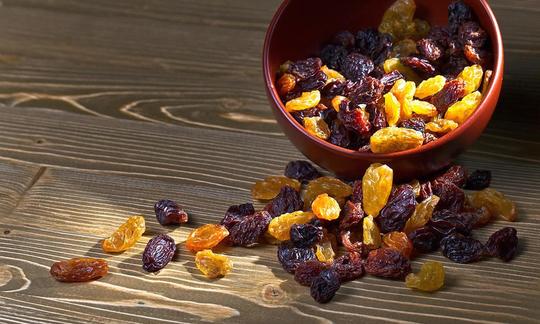

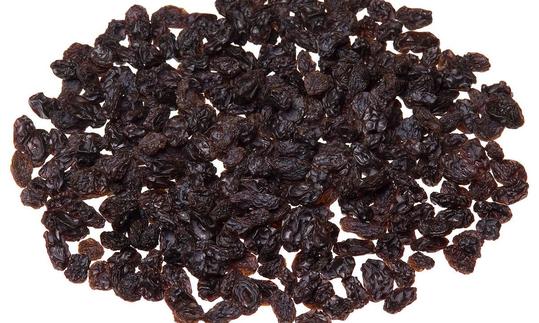

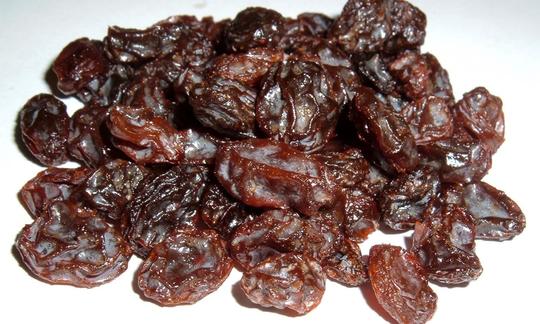

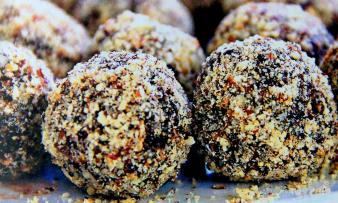
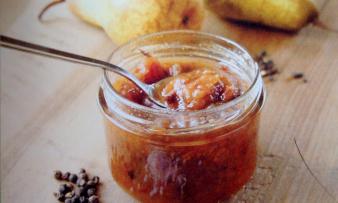
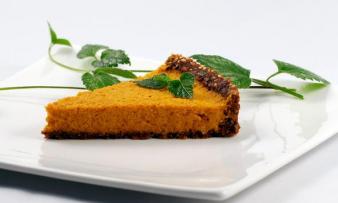





Comments